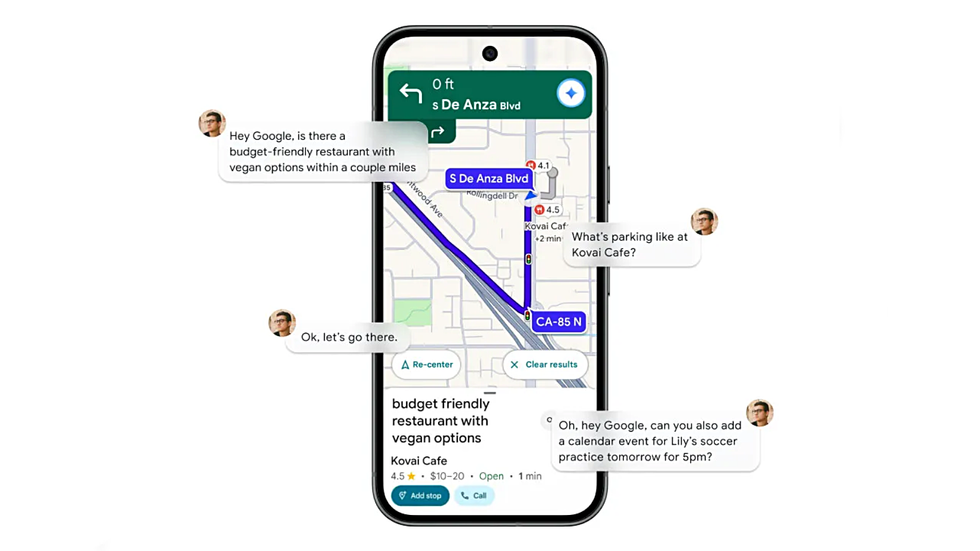
Google is rolling out its Gemini Artificial Intelligence (AI) system into Google Maps for the first time. The arrival of the clever AI assistant is designed to improve the experience of using Google Maps from behind the wheel.The update is packed with several new capabilities, including voice controls, improved turn-by-turn directions, and critical information on the best restaurants and landmarks, and more. The upgraded technology combines Gemini’s processing capabilities with Google Maps’ extensive database to provide immediate answers.This comes as Google is actively integrating Gemini further into its devices. In fact, Google Maps most recently announced the replacement of its former assistant, dubbed Google Assistant, with Google Gemini. However, these new enhancements won’t be seen in the UK just yet. Google is currently planning to gradually release them in the US over the coming weeks, with no confirmed timeline for when other areas will be treated to the same rollout. First, you’ll be able to interact with the navigation system through voice commands alone, eliminating the need to touch your device while behind the wheel. The AI assistant will understand complex requests and provide intelligent responses based on comprehensive location data.The new Gemini integration allows you to request complex navigation assistance through voice alone. You can ask for specific requirements, such as affordable dining options with plant-based menus within a short distance of your route, followed by parking availability queries.The system is designed to handle multiple requests seamlessly. You might instruct it to navigate to a chosen location, then request calendar entries for future appointments, which Gemini will create automatically with your consent.During your journey, you can also inquire about popular menu items at your destination or catch up on sports results and current affairs. The voice-activated system also enables instant traffic incident reporting by simply stating observations about accidents, flooding or congestion ahead.Navigation will become more intuitive through the use of recognisable landmarks rather than abstract distance measurements. The system will direct you using visible reference points such as petrol stations, dining establishments and notable structures along your route.
– YouTube
For instance, you’ll receive instructions like “turn right after the Thai Siam Restaurant” with the location highlighted on your display as you approach. The technology analyses data from 250 million locations and cross-references street-level imagery to select the most prominent and useful landmarks. The platform will also alert you to traffic disruptions ahead, even when you’re not actively using navigation. These notifications will warn about unexpected road closures or severe congestion before you encounter them.The camera-based exploration feature will enable you to discover information about nearby establishments through your device’s lens. You can activate this by selecting the camera icon in the search interface and pointing your phone at restaurants, cafés, retail outlets or significant landmarks.
– YouTube
When location markers appear, you can tap the microphone to pose questions about these venues. For example, you could ask about a location’s reputation and popularity, or enquire about the atmosphere inside an establishment.The updates will be available on both Android and iOS devices, with Android Auto compatibility planned for future release.